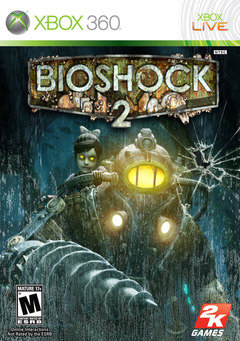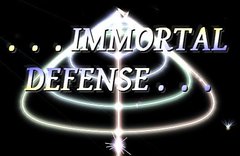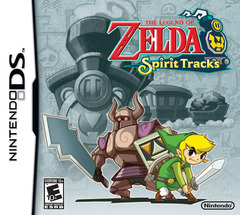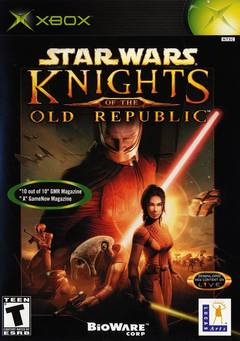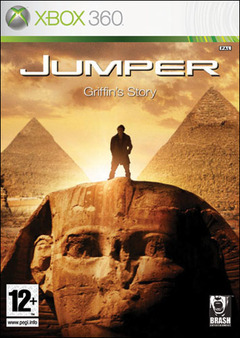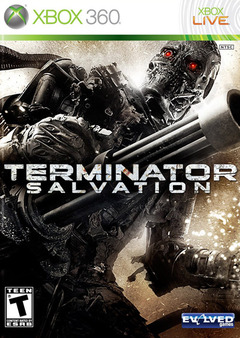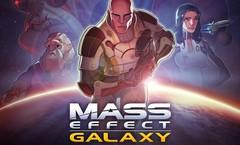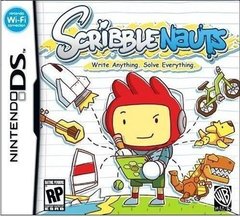Full Reviews
Full game reviews as we beat them, there will be a balance of both new and old games reviewed. We review the basics of the game and deliver scores in a few categories and an overall score out of 10.
BioShock 2
The sequel to the original BioShock has finally arrived, and boy, is it good! BioShock 2 returns the player to Rapture, the underwater city dreamed up by Objectivist Andrew Ryan. Many gamers were skeptical of the need for a sequel, myself included, but developer 2K Marin made me a believer.
I'm not sure how much more I can say without actually reviewing the game, so let's just get into that. As usual, the multiplayer aspect of the game will not factor into my final opinion very much but I did play it for some time and will provide my thoughts on it. This review is based on the Xbox 360 version that 2K Games provided me a review copy of. I am also a big fan of the first game and you can read my review and thoughts on the original BioShock for comparison if you'd like.
Finally, check out the first hour review of BioShock 2 if you're interested.
Immortal Defense
Our second entry in this indie game month is a tower defense game by Studio Eres entitled Immortal Defense. I use the phrase "tower defense" lightly here, as while marketed as such, (Immortal Defense – a Tower Defense game), the creators only borrowed the genre basics and strived for much more than tower defense game #481.
In case you aren't familiar with tower defense, it is a strategy gametype where the player is thrown into a fairly large, relatively open area with start and end points. As a level begins, waves of mindless enemies trickle from the start point and make their way to the exit. It is your job to place towers in strategic locations to hold off this onslaught. Resources and available towers are limited at the start, but increase as you kill enemies and as time progresses. Tower types are somewhat varied but usually have characteristics such as single shot vs multishot vs cone vs aoe, perhaps the ability to slow/freeze, and varying ranges from poking distance to full screen. The roots behind the genre have been around for a while but seems to have really taken off over the lifespan of Warcraft III. The mod creation tool led itself perfectly to creating tower defense games and many people were soon spending hours blowing up hordes of mindless drones. Following the huge success of these games, tower defense soon spread beyond mods to more easily accessible flash games and even standalones such as Defense Grid (on XBLA/Steam), and that's where we are now.
The Legend of Zelda: Spirit Tracks
The Legend of Zelda: Spirit Tracks is the latest in the revered Legend of Zelda series. I doubt anyone needs an introduction to this series, so I won't give one.
Spirit Tracks is on the Nintendo DS, and is a direct sequel to 2007's Phantom Hourglass. The controls have remained mostly the same, with a few refinements that I'll get into later.
Spirit Tracks follows the story set out by Wind Waker and Phantom Hourglass. It's now a hundred years later and everything is settled in the new land, with Zelda as the princess. Link is training to become an engineer (get it? Training?) when suddenly bad things happen and Link is the only one who can fix them. We've heard it all before, right? Maybe all except the train part. But this time, Zelda has had her body stolen, and she travels with Link in spirit form. She acts both as fairy companion a la Navi (although much less intrusive), and she doubles as a giant-sword-wielding, invincible suit of armor. Zelda can possess Phantoms and you can control her, in a new twist to the Zelda series. So for those of you clamoring for a playable Zelda character, this is as close as you can (and probably ever will) come.
Dead Panic
Zombie games are gaming's latest craze gone wild. With the popularity of zombie shooter Left 4 Dead at its peak, Call of Duty: World at War featuring a Nazi zombie mode, and old classics like Zombies Ate My Neighbors being re-released on the Virtual Console, a zombie outbreak is as ripe of setting as ever. Independent developer Sean Maher has brought the classic hobby of mowing down zombies to the iPhone now with Dead Panic, a tactical zombie shooter. Dead Panic is light on story, but heavy on difficult scenarios for your soldiers to survive. The premise is simple: strategically place your soldiers, and let loose horde.
Dead Panic is our first indie game review of 2010, we'll be featuring five more indie-developed games throughout the month of February. Dead Panic is available on the Apple App Store right now for the very reasonable price of $1.99.
Heavenly Sword
Heavenly Sword is the latest PS3 exclusive title from developers Ninja Theory. They are a relatively new and smaller development house based in Cambridge, England. Originally founded under the name Just Add Monsters, their only previous project was an unrelated original Xbox exclusive entitled Kung Fu Chaos. Released in 2007, Heavenly Sword was hyped as displaying an example of what the PS3 was truly capable of.
The game follows the story of Nariko as she comes face to face with the prophecy of her people, a prophecy that may lead to victory over an opposing army but will almost surely end in her death. According to the story, Nariko’s clan has possession of The Heavenly Sword, a gift left behind by a warrior deity who once wielded the sword to protect them. It is now their sworn duty to protect the sword and to make sure it doesn’t fall into the wrong hands. Legend has it that any mortal who wields the sword will be granted amazing powers in combat, enabling them to slay armies, but will succumb to it’s power by eventually being cursed and dying a horrible death. The prophecy further says a male warrior will be born on a special day with the power to wield the sword. But on that prophetic day, the very feminine Nariko is born instead.
Star Wars: Knights of the Old Republic
Back in 2003, I played a bit of Star Wars: Knights of the Old Republic on the PC when it was released. It was college, so everybody was doing it, but for whatever reason, I only played a few hours. In 2009, I played the first hour of the game and rediscovered a gem. I loved Jade Empire and Mass Effect, but here was their older brother: slower paced and much more heavily based in the D20 rule set. It seemed like it wouldn't be possible to take the step backward from those action heavy games to Knights of the Old Republic, but after playing the first hour, I had to give it a try again.
I have a bit of an odd history with the game, like I mentioned, I played KotOR when it was first released, but gave up on it after reaching a key point in the game about 8-10 hours in. While replaying the game this time around, however, I couldn't remember how far I had played. I kept thinking, "oh, I remember doing this before, but there's no way I played beyond that" until I reached a point where I thought I really was playing all new content. Turns out, a few weeks ago I was perusing some random posts I wrote on a message board in 2003 and I was actually having a discussion with someone about reaching a particular scene I have absolutely no memory of playing. It was this really weird sense of deja vu, like I could have beaten the game but not remembered it.
I've beaten the game now though, here's my full review of Star Wars: Knights of the Old Republic on the Xbox.
Jumper: Griffin's Story
Jumper: Griffin's Story is a video game spinoff of a movie that was based on a novel by author Steven Gould. Yes, you read that right. It was developed by an Aussie studio called RedTribe, famous for such megahits as Looney Tunes: Acme Arsenal and Space Chimps. The movie and novel follow the life of a young man named David Rice as he grows up and eventually realizes he has the ability to teleport. At first it’s a life saving surprise, but over time David starts to use his ability to his advantage. He travels the globe and "accumulates" vast riches. However, his activities don’t go unnoticed. In the movie, we are introduced to a secret society of "Paladins"; men whose job it is to hunt down and kill those with the ability to teleport, also known as Jumpers. It isn’t long before the Paladins take an interest in David.
As we follow David’s adventures, we’re introduced to a fellow Jumper named Griffin. He plays a multi-faceted role as both David’s teacher and, to a certain degree, his antagonist. He’s an intriguing character and it’s clear he’s been around the block before with the Paladins. He’s cocky and experienced and generally more interesting than the character of David. Perhaps that’s why the game follows Griffin’s story rather than David’s. But was the decision to base a game on a supporting role rather than the main character a good one? Read on to find out.
Terminator Salvation
Terminator Salvation is the recent adaptation of the McG helmed latest installment in the Terminator movie franchise. The game was developed by Halcyon Games with Grin Entertainment, the same company known for pumping out some of the years most underwhelming licensed properties and sequels, including Wanted: Weapons of Fate (review forthcoming) and a 3-D re-imagining of the classic Capcom game, Bionic Commando.
The game is a cover-based third person shooter. It revolves around several of the main characters from the film of the same name; John Connor, Blair Williams, Angie Saltar, and the enigmatic Barnes. The story is essentially a prequel, taking place in a timeline in the future (after Terminator 3) but before the events depicted in the movie. It follows a mission that sets Connor on his path to the upper echelons of the resistance. The storyline involves a situation where Connor is faced with a choice: follow orders (and let people die), or disobey orders (and attempt to rescue a group in trouble). Naturally, our hero eschews his orders in an effort to save his fellow freedom fighters. In so doing, he sets himself on a trajectory that will have him rebuking his commanders and showing a level of leadership that had previously eluded him. Now let’s see how it plays.
Mass Effect Galaxy
It can be frustrating when your current favorite series releases a spin-off on a platform you don't own; this has happened to me before with Metal Gear Acid on the PSP, and now it happens again with Mass Effect Galaxy on the iPhone. Considering the game only costs three dollars, the barrier to playing is either cough up $200 for an iPod Touch or try to find someone who will give up their Precious for a few hours. I managed to convince someone of the latter, and the portable action RPG is finally in my hands.
Mass Effect Galaxy is an iPhone spin-off of the popular space epic series released in June. It introduces two brand new characters, Jacob Taylor and Miranda Lawson, who are the new major squad members in Mass Effect 2. The gameplay is top-down action similar to the run-and-gun games of old but features the extensive dialogue system from the console big brother. Much like the novels, Galaxy is meant as a bonus for those of us who are looking for any kind of hit we can get while we wait for the sequel to arrive in January. Here's my review of Mass Effect Galaxy on the iPhone.
Scribblenauts
The most talked about DS game at this year’s E3 wasn’t another installment in a popular and established franchise, but instead a strikingly original title from the creators of the Drawn to Life series, 5th Cell. In the same spirit as their million-seller, Scribblenauts relies heavily on the creativity of the player. Armed with tens of thousands of words, you must solve puzzles that range from moving a cow off the road to saving people from a horde of hungry zombies. If you can think it, you can do it.
Players control the rooster hat-wearing Maxwell, a kid that always has a smirk and curiously wear shorts with long sleeves. Maxwell is thrown into hundreds of levels with one simple goal: find and obtain an object called a starite. In order to do this, the player must summon objects by writing them via a mini-keyboard or by spelling them out (trust me, it’s easier to just use the keyboard). Objects will then appear in the level to help, or in some cases, hurt you. The game boats tens of thousands of objects, and 5th Cell has done a remarkable job including pretty much everything you can think of. Practical objects like bridges, ladders, and boxes are in the game, but it also has every kind of obscure animal, vehicle, or instrument you can think of. The game is also filled with a lot of bizarre and nerdy objects such as internet memes (lol wut is a personal favorite), Lovecraftian monsters, mythological creatures, giant robots and everything in between. Is a helibackpack a real thing? It doesn’t matter, it’s in the game and can be quite useful.

